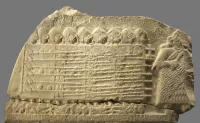Darfur is a region in western Sudan with a history of shifting rule. Originally named Dardaju by the Daju people around 350 AD, it became Dartunjur under the Tunjur. For centuries, Darfur existed as an independent sultanate. However, in 1874, it was conquered by the Sudanese warlord Rabih az-Zubayr. Subsequently, Anglo-Egyptian forces invaded and incorporated Darfur into Sudan in 1916, marking the end of its independent status.
1916: Invasion and incorporation into Sudan
In 1916, Anglo-Egyptian forces invaded Darfur and incorporated it into Sudan.
1956: Sudan achieved political independence
In 1956, Sudan achieved political independence, continuing a pattern of skewed economic development.
August 1958: Ahmad Makki Abdo succeeds Ali Abdallah Abu Sinn
In August 1958, Ahmad Makki Abdo succeeded Ali Abdallah Abu Sinn as governor.
December 1959: Al-Tijani Sa'd replaces Ahmad Makki Abdo
In December 1959, al-Tijani Sa'd replaced Ahmad Makki Abdo as governor.
1973: Darfur population was 1.3 million
In 1973, Darfur's population was 1.3 million.
2003: Start of the War in Darfur
In 2003, the War in Darfur began between Sudanese government forces and the indigenous population, leading to a humanitarian emergency and genocide situation in the region.
2003: Peak of fighting in Darfur conflict
In 2003, the fighting in Darfur reached a peak with the beginning of the Darfur conflict, where resistance coalesced into a rebel movement.
March 2004: Conflict regarded as humanitarian disaster
In March 2004, human-rights groups and the UN regarded the Darfur conflict as one of the worst humanitarian disasters in the world.
2006: Transitional Darfur Regional Authority Established
In 2006, the Darfur Peace Agreement established a Transitional Darfur Regional Authority as an interim authority for the region.
2006: Darfur Peace Agreement Signed
In 2006, the Government of Sudan and the Sudan Liberation Movement of Minni Minnawi signed a Darfur Peace Agreement.
April 2007: Minni Minnawi becomes chair of the authority
In April 2007, Minni Minnawi became the first chair of the Transitional Darfur Regional Authority.
2007: Minni Minnawi Appointed Senior Assistant to the President
In 2007, the leader of the Sudan Liberation Movement, Minni Minnawi, was appointed Senior Assistant to the President of Sudan and Chairman of the transitional authority.
2008: Darfur's budget was US$286 million
In 2008, Darfur's budget was US$286 million.
2008: Darfur's Population
In 2008, Darfur's population was 7.5 million.
December 2010: Shartai Jaafar Abdel Hakam succeeds Minni Minnawi
In December 2010, Shartai Jaafar Abdel Hakam succeeded Minni Minnawi as the chair of the Transitional Darfur Regional Authority.
2010: UN Estimate of Deaths
By 2010, the UN estimated that about 300,000 people had died in the Darfur conflict, and about 3,000,000 were forced into refugee camps.
January 2011: Liberation and Justice Movement Accepts Peace Proposals
In January 2011, Dr. Tijani Sese, the leader of the Liberation and Justice Movement, stated that the movement had accepted the core proposals of the Darfur peace document proposed by the joint-mediators in Doha.
February 2011: Sudanese Government Rejects Single Region Idea
In February 2011, the Sudanese Government rejected the idea of a single region headed by a vice-president from the region.
July 2011: Transitional Darfur Regional Authority Reconstituted
In July 2011, the Transitional Darfur Regional Authority was reconstituted as the Darfur Regional Authority with executive and legislative functions.
September 2011: Tijani Sese Assumed Chairperson Post
On 20 September 2011, Tijani Sese assumed the post of chairperson of the Darfur Regional Authority.
2015: UN Discussion on UNAMID Withdrawal
As of 2015, the United Nations was in discussion with the Government of Sudan over the withdrawal of UNAMID, the peacekeeping force, which is the largest in the world.
July 2016: Dissolution of the Darfur Regional Authority
In July 2016, the Darfur Regional Authority was dissolved following a referendum on the status of the Darfur region within Sudan.
August 2020: Signing of the Juba Agreement
On 31 August 2020, the Juba Agreement was signed in Juba, South Sudan, between the Sudanese authorities and rebel factions to end armed hostilities.
August 2021: Re-establishment of Darfur Regional Government
In August 2021, as part of the Sudanese transition to democracy, a Darfur Regional Government was re-established with Minni Minawi as Regional Governor.
2021: Continued tribal clashes during 2021
During 2021, tribal clashes had continued, despite the Juba Agreement.
2025: Establishment of a rival regional administration
In 2025, the rival Government of Peace and Unity established a parallel regional administration following their takeover of the Darfur region during the Sudanese civil war.
Mentioned in this timeline
Qatar is a country located on the Qatar Peninsula in...
Sudan officially the Republic of the Sudan is a country...
Egypt officially the Arab Republic of Egypt is a transcontinental...

War is defined as an armed conflict involving the organized...

Justice in its broadest sense is the concept of treating...

Annexation in international law is the forceful seizure and claim...
Trending
25 minutes ago Sarkisian, Kiffin coaching rumor approaches differ; Desmond Howard mentioned in Nemo's notes.
25 minutes ago Emily Finn, 18, Sayville Teen, Killed by Ex-Boyfriend in Tragic Shooting Incident
1 hour ago Pope Leo Visits Mosque, Lebanon, and Turkey Seeking to Bridge Christian Divide.

1 hour ago Chase Rice Announces Touring Break After 13 Years for a Major Career Move.

1 hour ago JO1 Makes History as First Japanese Group at Jingle Ball and New TVCM

1 hour ago Advent Calendar Craze: Adults Seek Food-Focused Delights and Score Black Friday Deals.
Popular
Aftyn Alyssa Behn is an American politician currently serving as...

William Franklin Graham III commonly known as Franklin Graham is...

Candace Owens is an American conservative political commentator and author...

XXXTentacion born Jahseh Dwayne Ricardo Onfroy was a controversial yet...

Marjorie Taylor Greene known as MTG is a U S...

Richard Branson is a prominent English business magnate best known...